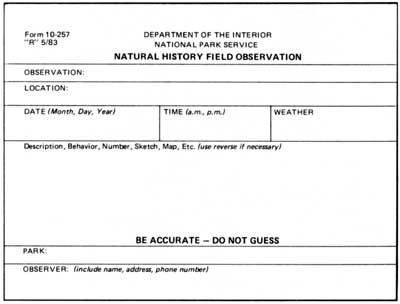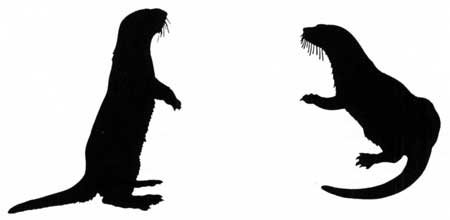|
Volume XXIV - 1993
Mustelids in Crater Lake?
By Michele Cardinaux
The term mustelid comes from the zoological family name
Mustelidae and is used to refer to the group of animals in that
family. Included in this group are martens, fishers, weasels, ferrets,
mink, wolverines, badgers, skunks, and otters. Representatives of this
group are found all over the world and in almost every type of
habitat.
Most members of the mustelid family are relatively small, with long,
low-slung bodies, short legs, short rounded ears, and a thick silky
coat. Primarily nocturnal (active at night), all mustelids are solitary
and remain alert throughout the year. Mustelids are mainly carnivorous,
eating small mammals, fish, birds, eggs, amphibians, and some plant
matter such as berries. Most of the species in this family have paired
anal scent glands, which in skunks are highly developed for defense. In
most other mustelid species, the secretions are used more as social and
sexual signals. Animals such as otters and wolverines spend a great deal
of time marking their "space" by rubbing their scent glands on surfaces
throughout their territory.
Mustelids exhibit a fair amount of play behavior. Otters, for
example, are noted for their ''playful" behavior and spend time with
other otters when engaged in "play." Of course, we have to be careful
about crediting animals with human attributes. Many of these perceived
"games" animals play are actually excellent training exercises for
survival because they strengthen muscles and sharpen reflexes. It is
interesting to note that the primate family (which includes humans) is
the only other group of mammals that consistently exhibits such
behavior.
Recently there have been several sightings of mustelid-like animals
in Crater Lake. At this point, however, we have no confirmed reports of
mustelids using the lake but most of the human activity on Crater Lake
is centered on a relatively small portion of the caldera. The surface of
Crater Lake covers 21 square miles, so there is plenty of room for an
animal to remain undetected. Since mustelids tend to be shy creatures
and avoid human contact, the difficulty in confirming sightings is
probably further compounded.
Crater Lake could be an attractive food source for mustelids.
Introduced fish and shellfish, as well as native salamanders and
invertebrates, are all possible mustelid foods. The lake is also well
within the ranges (which can extend from five to fifteen square miles)
of these animals.
What kindofmustelid may be using Crater Lake? River otters are a dim
possibility since they are known to fish and swim. Otter sightings are
rare in the park (none have been recorded in recent years), so the most
likely mustelid is the pine marten. These animals are regularly sighted
in the park and along the shores of Crater Lake, but are not known to
fish or swim. Although smaller in size than otters or martens, the
long-tailed weasel and short-tailed weasel swim and are strong
possibilities.
An example of a wildlife observation form is shown below. The
National Park Service needs well- documented observations of the park's
wildlife as a first step toward perpetuating their existence. Studies
conducted outside of the park can provide better scientific
understanding about mustelid species, but they cannot determine if these
animals are using Crater Lake. Only with detailed observations
(including length, color, shape or head, behavior, and location) can
gaps in the park's wildlife records be filled. Please ask for forms at
Crater Lake National Park's visitor information centers.


|

